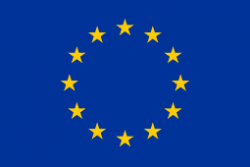CHEOPS (Consortium for Hall Effect in Orbit Propulsion System) project successfully launched
CHEOPS (Consortium for Hall Effect in Orbit Propulsion System) project had its kick off meeting on 23rd November 2016 at Safran Aircraft Engines venue in Vernon (France). CHEOPS proposes to develop three different Hall Effect Thruster (HET) electric propulsion systems (EPS): a dual mode EPS for GEO applications, a low power for LEO applications and a >20 kW high thrust EPS for exploration applications. Each of these will be developed according to market needs and drivers applying incremental technology changes to existing EPS products. The development approach will follow the European Space Agency (ESA) European Cooperation for Space Standardization (ECSS) approach and the dual mode and low power are targeting a System Preliminary Design Review (PDR) within 42 months from the project start. Development will cover the following elements: thruster, cathode, PPU and FMS. The project is aligned to the Strategic Research Cluster (SRC) guidelines published EPIC (see www.epic-src.eu). Through a detailed development plan the project will demonstrate their ability to achieve by the end of CHEOPS Phase II (2023) the following: a) TRL 7-8 for dual mode and low power b) high power HET EPS TRL 6. Common transverse activities will include advanced numerical design tools for electric propulsion which will further the understanding of the observable behaviour and interactions with the satellite platform and predict performances of a given design. This includes alternative propellants and the ability to estimate the system lifetime. Finally, significant progress will be made in establishing a HET performances measurement standard and developing advanced non-intrusive tests for measuring thruster erosion. The wide range of products will permit to be flexible and adapt the EPS configuration to the opening market and continuous market survey will potentially re-orientate the CHEOPS activities to fit with market opportunities. CHEOPS future products will permit their application to a wide variety of satellite platforms, payloads and missions. The CHEOPS consortium is led by Safran Aircraft Engines and is comprised of representatives of the biggest European Prime satellite makers (Airbus Defence and Space, OHB System, Thales Alenia Space), the full EPS supply chain (Advanced Space Technologies, Bradford Engineering, Deutsches Zentrum fuer Luft – und Raumfahrt (DLR), SITAEL) and supported by academia and research centres (Centre National de la Recherche Scientifique, Chalmers Technology University, SME4SPACE, Universidad Carlos III de Madrid). The CHEOPS project has received funding from the European Union’s Horizon 2020 research and innovation programme under grant agreement No 730135.
Keywords
electric propulsion, hall effect thruster, space
Countries
Belgium, Germany, Spain, France, Italy, Netherlands, Sweden



